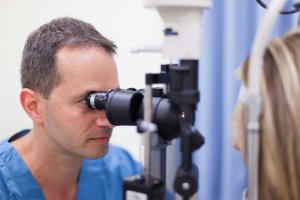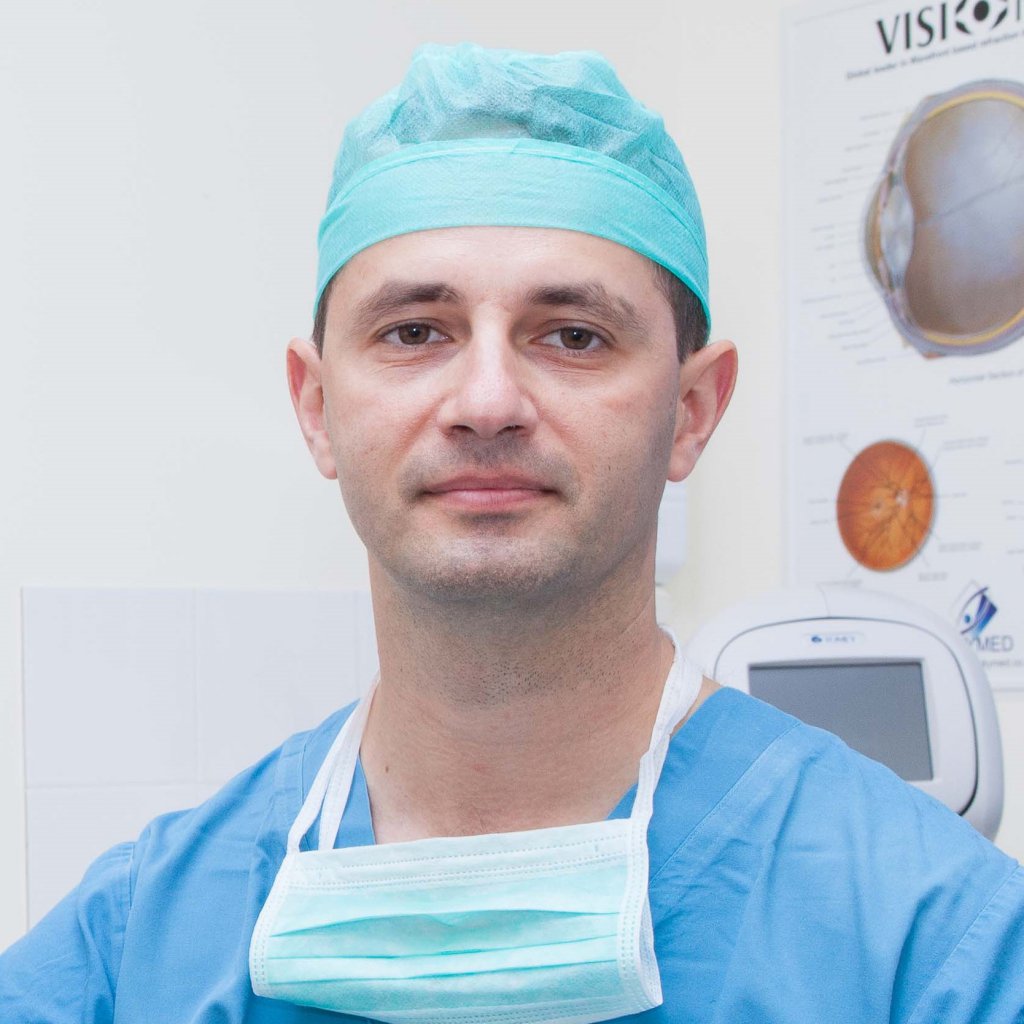Post-surgery, you will receive an explanation of how to use the drops you purchased before surgery. For the majority, there are two types which you start to administer on the day of surgery. It is important to know that when you administer drops, it is always one at a time (if you drip in more, the drops spill outside, as more than one drop cannot be held by the eye). After administering the different types of drops simultaneously, you wait for at least 5 minutes between each drop. Usually there is no need to administer drops at night, so the number of times that it is recommended can be divided into the hours that you are awake, for the duration of the day. For example, for three times a day -morning, afternoon and evening. Alternatively, for six times a day, administer roughly every three hours throughout the day. There are doctors who cover the eye with a dressing, and so start with the treatment the day after surgery, following the doctor’s examination.
You will generally have a follow-up appointment the day after surgery. In the event that the doctor performs the examination a few hours after surgery, you will not be required to return the following morning for the checkup. The examination the morning after surgery is very important. Its purpose is to make sure that no severe inflammation or infection has developed in the eye. Therefore, it is important to come to the follow-up and not try to get out of it with a claim that you are feeling fine (and that applies to the rest of the examinations later). During the checkup, an eye examination will be performed, and you will receive an explanation about the continuation of treatment with eye drops as well as all the post-operative limitations. The limitations include physical exertion such as heavy lifting (bags from the supermarket), bending and getting the eye wet. These limitations continue for a short time after surgery. There is no absolute agreement among ophthalmologists regarding the time you will be limited, but it generally does not exceed a week. For most, after a week you can go back to your routine. A limitation which is in place for longer, around three to four weeks, that of entering the swimming pool or the sea.
It is important to remember that improvement in vision does not occur immediately post-surgery.
Around a week after surgery, there will be a significant improvement in vision, but only after around a month can the final result be determined, and therefore it is recommended that you see an optometrist to be fitted for spectacles only after this period.
It is not always possible to be precise about the final result, with respect to the need for spectacles post-surgery. Occasionally there is a slight shift from the desired result and therefore you need to take into account that you may need spectacles after surgery, regardless of the kind of lens that was implanted. In order to explain the possible imprecision, I will compare the difference between surgery, where a lens was implanted according to the results of a lens-measuring device that was done prior to surgery, with the examination by the optometrist. While during surgery the doctor fixes a particular lens in place, the optometrist can change lenses throughout the examination until reaching the optimal and desired state. This substitution process is not possible during surgery.
Sensations such as burning, itching, tearing and “sand in the eyes” are completely natural following surgery. These phenomena are caused by increased dryness in the eye and pass after a period of time which varies from one person to another. The time ranges from between a few weeks to a few months.
There are a number of chronic eye conditions known before surgery that “worsen” afterwards. This is “seeing black spots”, which for most existed before surgery as well. These are changes of the vitreous fluid (the gel filling the eye) and are connected to age. The reason they are viewed more clearly post-surgery is that removal of the cataract “screen” allows more light to enter the eye and makes vision clearer, not only of objects around us but also those that disturb that exist inside the eye.
Additional and frequent complaints post-surgery are redness of the eyelids, itching, white discharge, burning and tearing. Here too for an existing chronic condition, following the anti-inflammatory treatment given after surgery, it appears to a different extent. This is Blepharitis – inflammation of the edge of the eyelid which causes dryness of the eyes. The anti-inflammatories suppress it, and it recurs after treatment is stopped. It is not a new inflammation, that appears post-surgery, rather an existing condition which became unbalanced due to surgery. The treatment for these conditions is quite simple: clean the border of the eye and the eyelashes using special wipes that can be purchased from any pharmacy without a doctor’s prescription, no-tears shampoo, and treatment with tear substitutes which can also be purchased without a prescription. There are a large number of tear substitutes, and each one has advantages and disadvantages. There isn’t one that is better than another, and therefore it is a good idea to try and see what suits you in terms of providing relief. My only recommendation is that it is preferable to use tear substitutes without preservatives. Treatment with them is as needed, in accordance with the extent and frequency of the complaints.
Seeing halos, blindness due to glare, and seeing colors more strongly are normal phenomena after surgery and are common in certain types of lenses, but for the most part these symptoms disappear after a time. That is also so as regards seeing a black arch on the external side of the field of vision of the eye that was operated on. If the symptoms do not go away over time (it could take a few months), it is recommended that you come for an eye examination and consultation with a doctor. There are different treatments available to improve the condition.
Symptoms which should worry you post-surgery are the following: severe pain in the eye that underwent surgery which are occasionally accompanied by headaches and vomiting – this is a sign of high intraocular pressure; pain accompanied by swelling and redness of the eyelids, purulent discharge and a decrease in vision – these signs raise the suspicion of an infection inside the eye. These conditions warrant you to see an ophthalmologist urgently.
Normal monitoring by an ophthalmologist post-surgery involves three examinations: the day after surgery, a week after surgery and again after a month. It is a regular examination similar to the examination before surgery. The medicinal treatment post-surgery usually finishes after a month. This is also the time to see an optometrist and be fitted for spectacles if necessary.
The lens implanted during surgery will accompany you throughout your life. The eye does not identify that there is an artificial lens inside it, and you will not feel it either. Vision is usually stable in the event that additional diseases of the eye do not develop. Sometimes the capsule the artificial lens sits in can become scarred and cloud over, and then vision is weakened. This phenomenon is known as a “Secondary Cataract” and can occur at different times post-surgery. Laser treatment which lasts around five minutes at an eye clinic returns vision to its former state. It is a safe procedure, does not hurt, and is low risk.
I will stop here and say that I am full of hope that this article has contributed to your understanding of what goes on “behind the scenes” of cataract surgery and that I has reduced your feeling of stress and anxiety. Remember that in the vast majority of cases the process is very successful.
Be calm and trust your doctor.
Wishing you the best of luck.



